Monograph of wild and cultivated chili peppers (Capsicum L., Solanaceae)
- PMID: 36762372
- PMCID: PMC9881532
- DOI: 10.3897/phytokeys.200.71667
Monograph of wild and cultivated chili peppers (Capsicum L., Solanaceae)
Abstract
Capsicum L. (tribe Capsiceae, Solanaceae) is an American genus distributed ranging from the southern United States of America to central Argentina and Brazil. The genus includes chili peppers, bell peppers, ajíes, habaneros, jalapeños, ulupicas and pimientos, well known for their economic importance around the globe. Within the Solanaceae, the genus can be recognised by its shrubby habit, actinomorphic flowers, distinctive truncate calyx with or without appendages, anthers opening by longitudinal slits, nectaries at the base of the ovary and the variously coloured and usually pungent fruits. The highest diversity of this genus is located along the northern and central Andes. Although Capsicum has been extensively studied and great advances have been made in the understanding of its taxonomy and the relationships amongst species, there is no monographic treatment of the genus as a whole. Based on morphological and molecular evidence studied from field and herbarium specimens, we present here a comprehensive taxonomic treatment for the genus, including updated information about morphology, anatomy, karyology, phylogeny and distribution. We recognise 43 species and five varieties, including C.mirum Barboza, sp. nov. from São Paulo State, Brazil and a new combination C.muticum (Sendtn.) Barboza, comb. nov.; five of these taxa are cultivated worldwide (C.annuumL.var.annuum, C.baccatumL.var.pendulum (Willd.) Eshbaugh, C.baccatumL.var.umbilicatum (Vell.) Hunz. & Barboza, C.chinense Jacq. and C.frutescens L.). Nomenclatural revision of the 265 names attributed to chili peppers resulted in 89 new lectotypifications and five new neotypifications. Identification keys and detailed descriptions, maps and illustrations for all taxa are provided.
Keywords: America; Capsicum; chili peppers; cytogenetics; morphology; phylogeny; taxonomy.
Gloria E. Barboza, Carolina Carrizo García, Luciano de Bem Bianchetti, María V. Romero, Marisel Scaldaferro.
Figures
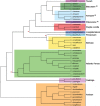


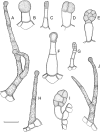
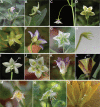

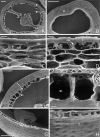

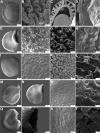

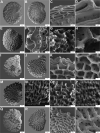
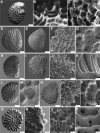



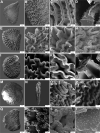
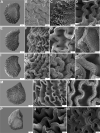
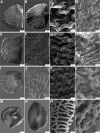

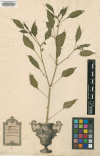

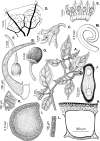
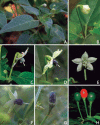

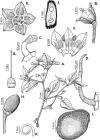
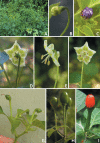

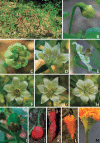
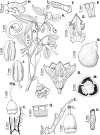
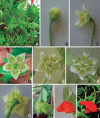
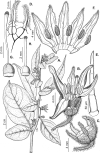

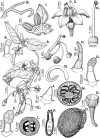

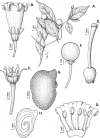
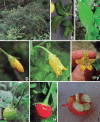
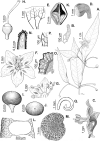

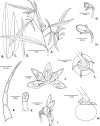
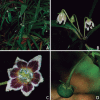

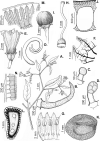
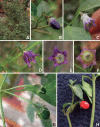
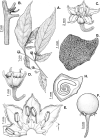
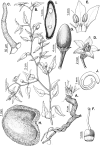
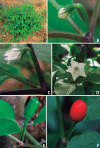
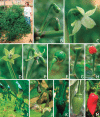

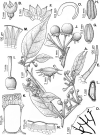


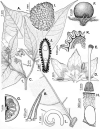


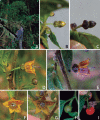

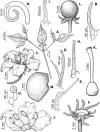
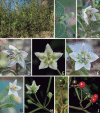

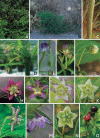


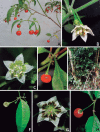
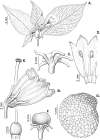


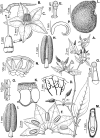
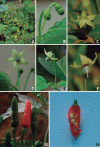

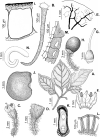
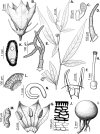
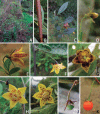
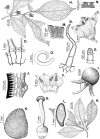
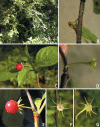

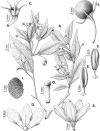
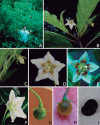

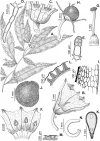


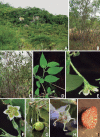
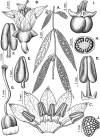
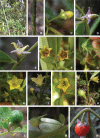
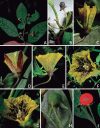

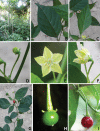
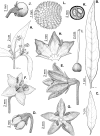
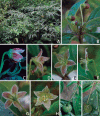
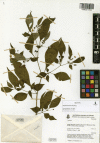


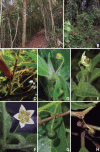

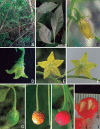
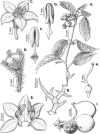
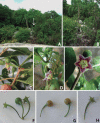
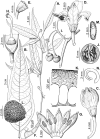
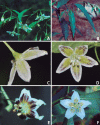

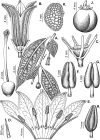
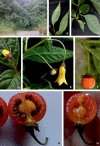
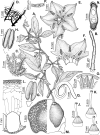
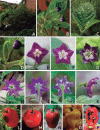

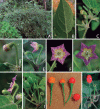
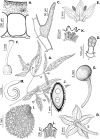
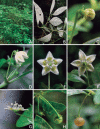

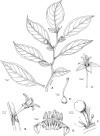
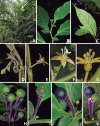
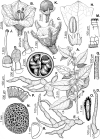
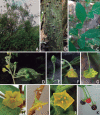

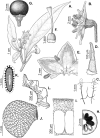

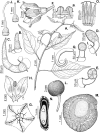
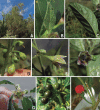



Similar articles
-
Phylogenetic relationships, diversification and expansion of chili peppers (Capsicum, Solanaceae).Ann Bot. 2016 Jul;118(1):35-51. doi: 10.1093/aob/mcw079. Epub 2016 May 30. Ann Bot. 2016. PMID: 27245634 Free PMC article.
-
Four new species of Capsicum (Solanaceae) from the tropical Andes and an update on the phylogeny of the genus.PLoS One. 2019 Jan 16;14(1):e0209792. doi: 10.1371/journal.pone.0209792. eCollection 2019. PLoS One. 2019. PMID: 30650102 Free PMC article.
-
The genus Lycianthes (Solanaceae, Capsiceae) in Mexico and Guatemala.PhytoKeys. 2020 Nov 27;168:1-333. doi: 10.3897/phytokeys.168.51904. eCollection 2020. PhytoKeys. 2020. PMID: 33335445 Free PMC article.
-
Final report on the safety assessment of capsicum annuum extract, capsicum annuum fruit extract, capsicum annuum resin, capsicum annuum fruit powder, capsicum frutescens fruit, capsicum frutescens fruit extract, capsicum frutescens resin, and capsaicin.Int J Toxicol. 2007;26 Suppl 1:3-106. doi: 10.1080/10915810601163939. Int J Toxicol. 2007. PMID: 17365137 Review.
-
Biochemistry and molecular biology of carotenoid biosynthesis in chili peppers (Capsicum spp.).Int J Mol Sci. 2013 Sep 16;14(9):19025-53. doi: 10.3390/ijms140919025. Int J Mol Sci. 2013. PMID: 24065101 Free PMC article. Review.
Cited by
-
A revision of Lycianthes (Solanaceae) in tropical Asia.PhytoKeys. 2024 Jul 29;245:1-106. doi: 10.3897/phytokeys.245.121988. eCollection 2024. PhytoKeys. 2024. PMID: 39113755 Free PMC article.
-
Fine Mapping and Candidate Gene Analysis of Two Major Quantitative Trait Loci, qFW2.1 and qFW3.1, Controlling Fruit Weight in Pepper (Capsicum annuum).Genes (Basel). 2024 Aug 20;15(8):1097. doi: 10.3390/genes15081097. Genes (Basel). 2024. PMID: 39202456 Free PMC article.
-
Fluctuation of ecological niches and geographic range shifts along chile pepper's domestication gradient.Ecol Evol. 2023 Nov 28;13(11):e10731. doi: 10.1002/ece3.10731. eCollection 2023 Nov. Ecol Evol. 2023. PMID: 38034338 Free PMC article.
-
Current knowledge and breeding strategies for management of aphid-transmitted viruses of pepper (Capsicum spp.) in Africa.Front Plant Sci. 2024 Oct 25;15:1449889. doi: 10.3389/fpls.2024.1449889. eCollection 2024. Front Plant Sci. 2024. PMID: 39524558 Free PMC article. Review.
-
A comprehensive review of integrated management strategies for damping-off disease in chili.Front Microbiol. 2024 Oct 17;15:1479957. doi: 10.3389/fmicb.2024.1479957. eCollection 2024. Front Microbiol. 2024. PMID: 39483761 Free PMC article. Review.
References
-
- Acquadro A, Barchi L, Portis E, Nourdine M, Carli C, Monge S, Valentino D, Lanteri S. (2020) Whole genome resequencing of four Italian sweet pepper landraces provides insights on sequence variation in genes of agronomic value. Scientific Reports 10: e9189. 10.1038/s41598-020-66053-2 - DOI - PMC - PubMed
-
- Adedeji O, Akinniyi TA. (2015) Pollen morphology of some species in the Family Solanaceae. Journal of Advanced Laboratory Research in Biology 6(4): 125–129.
-
- Adsersen H. (1989) The rare plants of the Galápagos Islands and their conservation. Biological Conservation 47: 49–77. 10.1016/0006-3207(89)90019-0 - DOI
-
- Aguilera PM, Debat HJ, Sánchez García Y, Martí DA, Grabiele M. (2014) IAPT chromosome data 18. Taxon 63(6): 1387–1393[E1–E3]. 10.12705/636.37 - DOI
LinkOut - more resources
Full Text Sources
